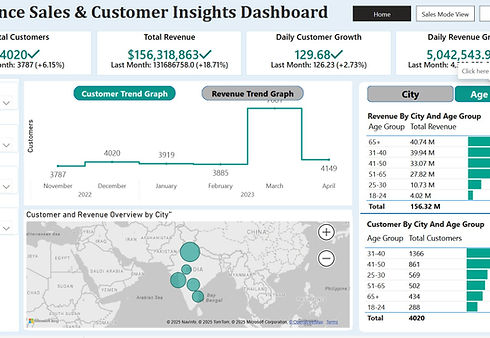Projects
Ecomerce Sales Analysis
E-commerce analysis focuses on key metrics including Year-to-Date (YTD) performance, profit, quantity sold, and profit margin. YTD tracks progress against annual targets, profit analysis ensures sustainable financial health, quantity sold reveals product demand, and profit margin indicates efficiency and pricing strategies. Monitoring these metrics guides strategic decisions for maximising profitability and operational effectiveness in the e-commerce domain.
Global Terrorism Analysis
-
Defining terrorism is challenging, and there is no single universally accepted definition. This can make it difficult to compare data from different sources.
-
The data on terrorism is often incomplete and unreliable. This is due to factors such as the difficulty of tracking terrorist activity in conflict zones and the fact that governments may not always be willing to share information about terrorist attacks.
-
The data on terrorism can be misused to justify harmful policies, such as discrimination against Muslims or military interventions in the Middle East. It is important to be critical of the data and to use it in a responsible way.
Virat Kohli Performance
-
Performance Trends: Analyze run-scoring trends over time, consider external factors (injuries, captaincy) for potential explanations.
-
Opponent Breakdown: Identify strengths (teams dominated) and weaknesses (teams struggled against), analyze specific bowler matchups.
-
Ground Analysis: Assess performance across grounds, identify strengths/weaknesses and explore potential reasons.
-
Recommendations: Tailored training, game plan adjustments, and collaboration with coaches based on findings.
-
Limitations: External factors like team form and individual fluctuations can impact performance.
-
Further Exploration: Analyze shot selection and dismissal patterns for deeper insights.
-
Holistic Approach: Combine data analysis with coaches' insights and Kohli's experience for informed decisions.
Employee Performance Analysis
Employee Performance Report focuses on key metrics including total employees, active employees, attrition rate, and monthly salary distribution. Total employees measure workforce size, while active employees track current staff engagement. The attrition rate highlights employee turnover trends, and monthly salary distribution reflects departmental compensation. Additional insights include gender distribution, inactive employees by age group, and resignations over time. Monitoring these metrics helps organizations optimize workforce management, identify retention challenges, and ensure operational efficiency.
Insurance Analytics Dashboard
🔹 Claim Trends: Analyze claim approval/rejection rates over time, considering external factors like policy changes, fraud patterns, or economic conditions.
🔹 Customer Segmentation: Identify high-risk vs. low-risk policyholders, analyze demographics, claim frequency, and policy preferences.
🔹 Fraud Detection: Detect anomalies in claim amounts, repetitive claims, or unusual patterns using AI-driven insights.
🔹 Premium & Revenue Analysis: Track premium collection, identify revenue leakage, and forecast future growth trends.
🔹 Policy Performance: Compare different insurance products, assess profitability, and optimize offerings based on customer needs.
🔹 Recommendations: Tailor pricing strategies, enhance fraud detection mechanisms, improve claim processing efficiency, and personalize customer engagement.
🔹 Limitations: External factors like regulatory changes, economic downturns, and market competition can influence performance.
🔹 Further Exploration: Analyze customer behavior, claim settlement timelines, and agent performance for deeper business insights.




